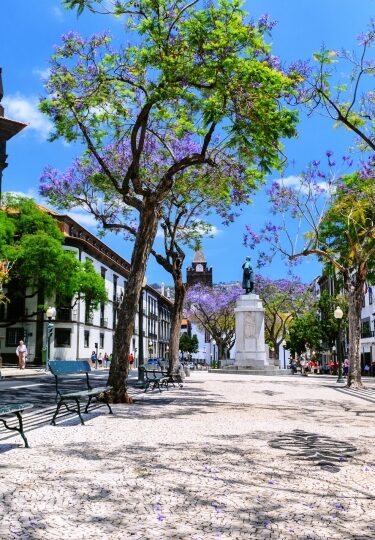Backed by forest-coated mountains with panoramic views over the dazzling deep-blue Atlantic, Funchal, Madeira, is a city enveloped in nature, and the cradle of the island’s culture.
As the coastal capital of Portuguese-owned Madeira, Funchal shares plenty of similarities to the mainland, such as the language and calçadas, the distinctive patterned stone sidewalks. Yet it also boasts its own cultural heritage.
From the volcanic-crafted viewpoints where traditional wooden-basket toboggan rides are still offered to the Madeiran carapuça, a pointed headdress often worn during dances, plenty distinguishes the island lifestyle from the motherland.
The weather is also an attractive bonus, thanks to the island’s location in the North Atlantic Ocean, closer to Africa than Europe. With a near-constant spring-like climate, you can expect year-round blooming flowers, welcoming sun-kissed beach days, and a plethora of tropical fruits and flavors.
Why Visit Funchal, Madeira

Forte de São Tiago
With a rich history and heritage that stands apart from mainland Portugal, Funchal celebrates the best of the island.
From the dazzling flower festivals which take over the city’s streets to the maze of Old Town streets decorated in colorful murals and seafood-centric restaurants, the city’s tapestry of creativity, classics, and culture combine for an idyllic urban island escape.
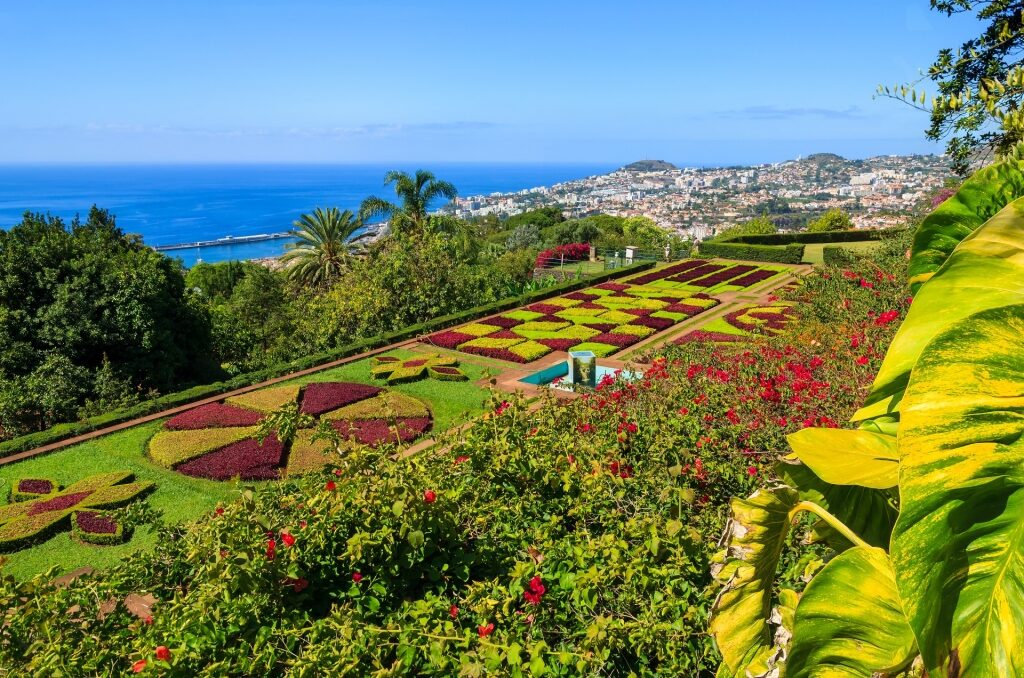
Madeira Botanical Garden
With grand botanical gardens and impressive ocean panoramas from weathered palaces, the city rises up the mountainous hills to make the most of the splendid natural setting.
Funchal is also the gateway to the rest of Madeira island’s nature-laden attractions, with the archipelago’s principal port and airport. Venture just a short distance from the city, and you can stand in awe at jagged peaks poking above the clouds, stroll along shaded levadas (irrigation channel) trails, or find lava-carved natural pools perfect for a refreshing dip.
History & Culture
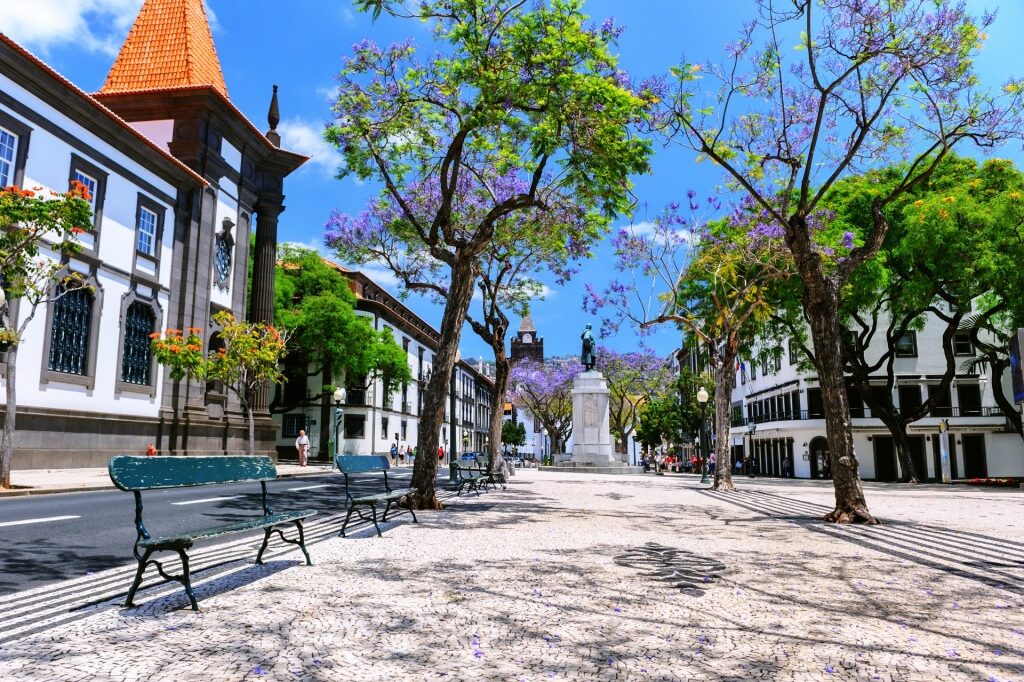
Old Town
Literally translated as “wood”, Madeira’s name was given by two Portuguese explorers who arrived on the uninhabited island in 1419.
Soon after, thanks to its important location between Europe, Africa and South America, settlements started to flourish as a growing population arrived from the mainland. By the late 15th century, Funchal, Madeira, had firmly cemented itself as a port of call for sailings on the European trade routes.
This prominent position led to the French and British invading the isle over the centuries, although it always returned to Portuguese hands.
Being isolated in the North Atlantic Ocean also allowed for crops to flourish that couldn’t be grown on the Portuguese mainland, such as tropical fruits and cane sugar. Later, in the 17th century, wine boosted the city’s economy.
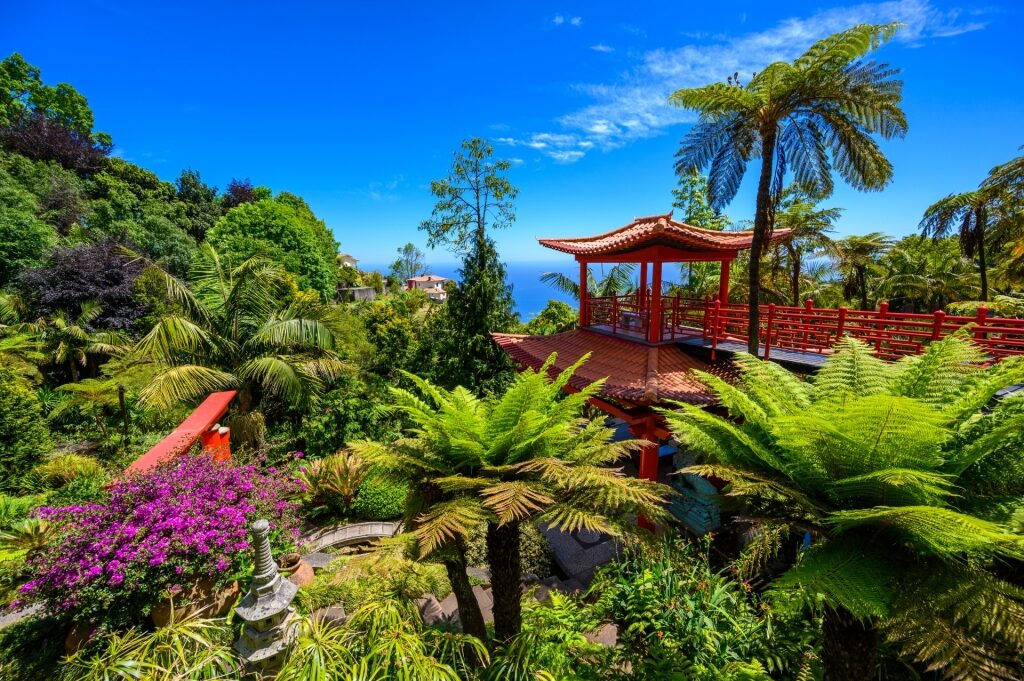
Monte Palace
Funchal and Madeira became a staple retreat for nobility seeking a serene escape. The 18th-century Monte Palace serves as just one reminder of these prosperous years.
Wildlife & Nature
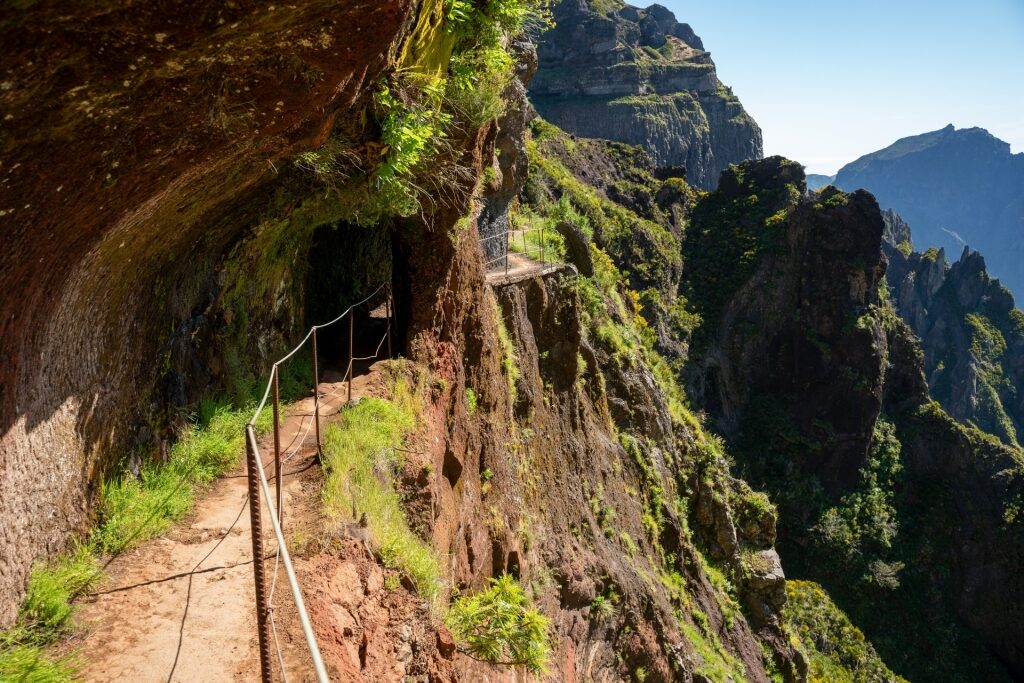
Pico do Arieiro
One of the best islands in Europe, Madeira is a natural playground crafted by volcanic explosions, yet many of the best trails are relatively flat thanks to the 15th-century levadas, or irrigation channels that traverse the island. Nowadays, these serve a second purpose, as spectacular and popular hiking trails.
Two levada walks can be found within the Funchal municipality, with the Poço da Neve to Casa do Barreiro, just over three miles long, a perfect introduction to the island’s fauna and flora.
Providing sweeping panoramas across the city and valley, the trail offers waterfall glimpses, with an extension leading to Monte.
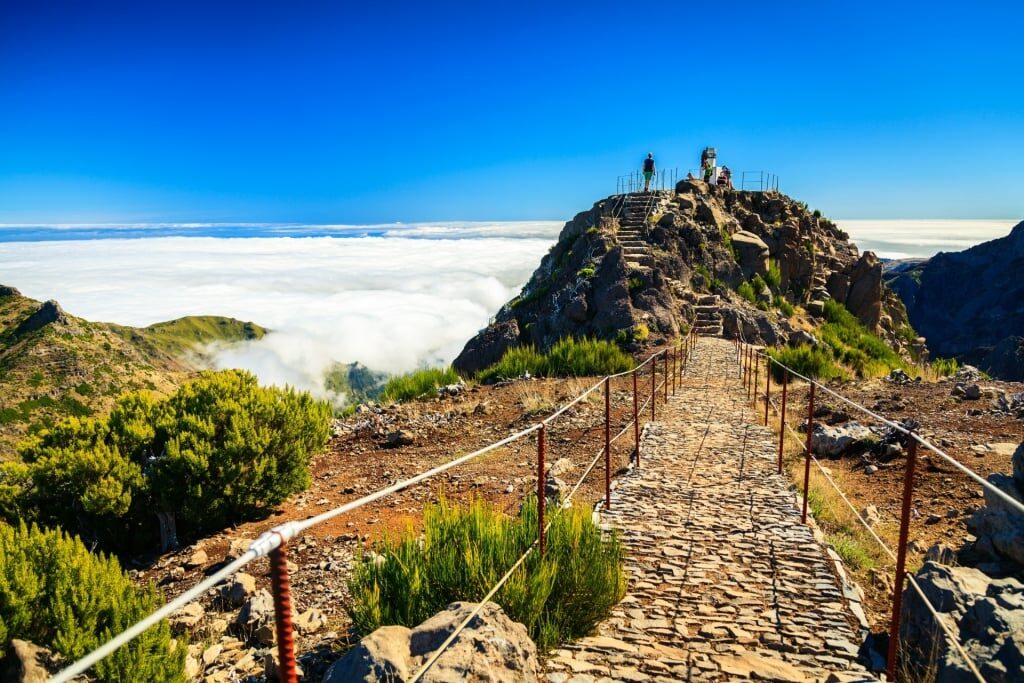
Pico Ruvio
The island’s highest point at 6,105 feet, Pico Ruvio, is only reachable on foot and promises by far the island’s best panoramas—especially when you are standing above the low clouds. You can find a more accessible and similar lofty viewpoint at Pico do Arieiro, which is reachable by road.
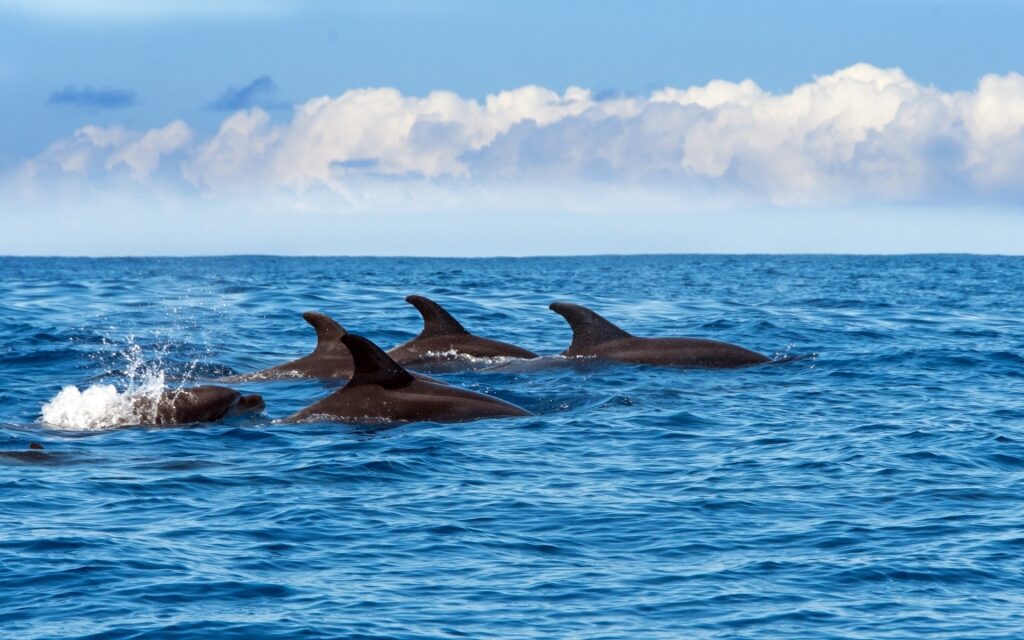
Whale
To spot dolphins and whales, you won’t have to stray far from Funchal, with boat tours departing daily to try and spot these year-round cetacean residents (and migratory visitors) in the wild.
From the ocean, you’ll also appreciate the dramatic design of the remote island, with scenic vistas back over impressive sea cliffs and cloud-shrouded peaks.
Tips for Visiting Funchal, Madeira
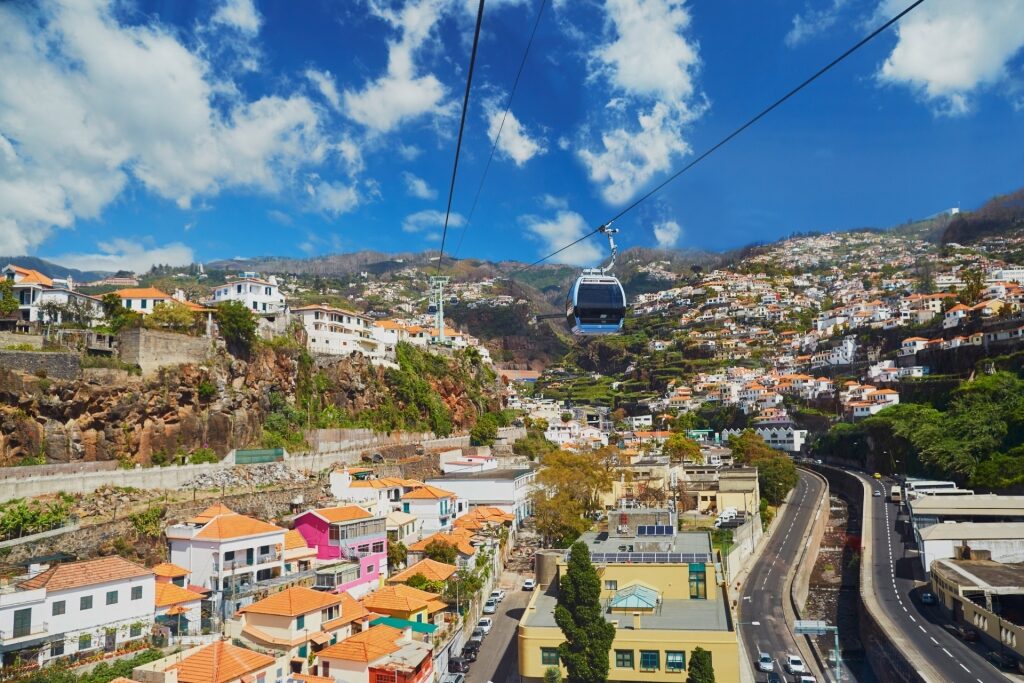
Funchal
While Funchal, Madeira, is a relatively compact city, and the waterfront areas can be easily explored on foot, the mountainous nature of the island means some of the attractions can be quite an uphill walk.
As such, the island’s cable car system, which climbs to higher points such as the Botanical Gardens and Monte Palace, is a welcome sight. If you plan on visiting both, consider the combined ticket, keeping in mind that you may wish to return sliding down the road on the traditional wooden-basket rides.
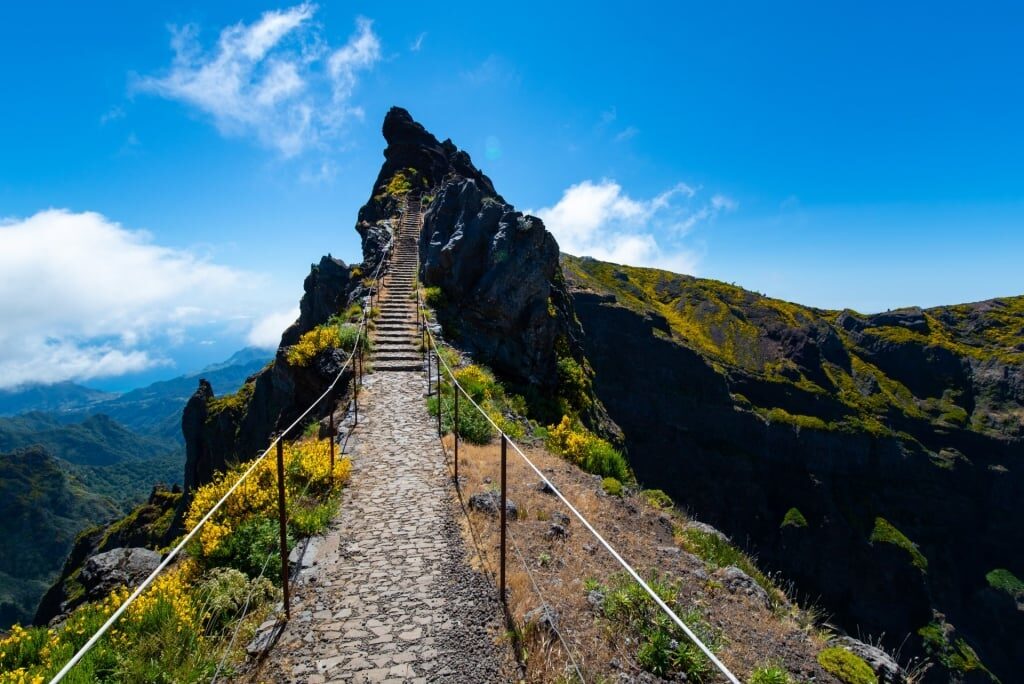
Pico do Arieiro
If the levada walking trails and highest peaks are calling, consider booking a tour rather than using the bus system, as this will allow more flexibility, especially if choosing a linear trail.
While the island’s center is certainly mountainous, many of the finest viewpoints are reachable by car, so non-hikers can still appreciate the magical panoramas.
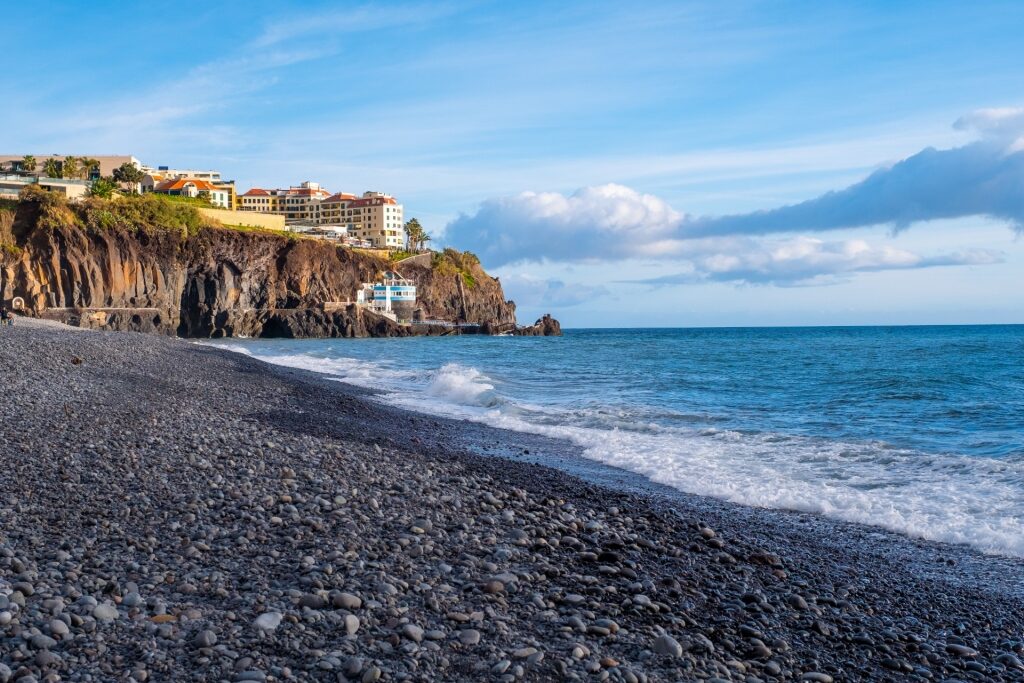
Praia Formosa
Should the beach be calling, stray a little further afield from Praia do Almirante Reis in the city center and visit larger Praia Formosa instead. Not only are the cliff-backed views more impressive, but lidos built into the rocks next to the beach provide a more tranquil swimming spot.
Be sure to bring flip-flops or beach shoes, as pebble bays are more common than sand on this volcanic island.
Things to Do & Attractions in Funchal, Madeira
Explore the Old Town (Zona Velha)

Palácio de São Lourenço
In the heart of Funchal, Madeira, the web of narrow streets and plazas which form the Zona Velha are just back from the oceanfront and easily explored on foot.
On the port side of the city, a cluster of grand gothic and baroque-style buildings towers above patterned squares and gardens, all constructed in the island’s signature style of dark stone and white highlights.
The first fortress in Funchal, the 16th-century Palácio de São Lourenço, makes for an imposing entrance, and the Cathedral of Funchal, Jesuit College of Funchal, and Paços do Concelho are also worth a photo stop.

Forte de São Tiago
The imposing 17th-century Forte de São Tiago marks the far end of the old city, and the small roads leading towards the fortification act as an open-air art gallery.
Not only do the aged buildings house local shops and restaurants, but they have been revitalized with colorful murals depicting traditional life as part of the Painted Doors Project.
For a sweet treat, slip into the Fábrica Santo Antonio, a vintage-looking biscuit and cake shop regarded as one of the island’s best, or enjoy a coffee paired with the premium multi-flavored chocolates of UauCacau.
Taste Fruits at Mercado dos Lavradores
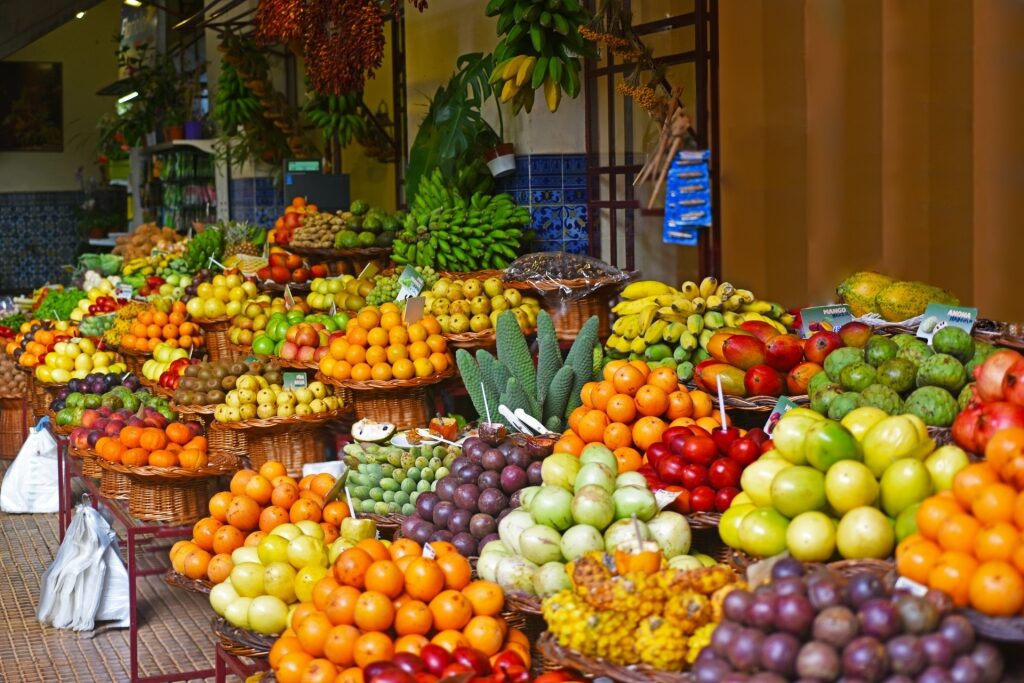
Mercado dos Lavradores
Since the 1940s, this city center market has been the place for locals to purchase the freshest produce. Nowadays, it’s frequented just as much by visitors, keen to savor the island’s vast collection of tropical fruits.
As you enter the market to the calls of sellers tempting you with tastings, keep an eye out for the blue and white azulejos (hand-painted tiles) depicting daily scenes from long-gone days.
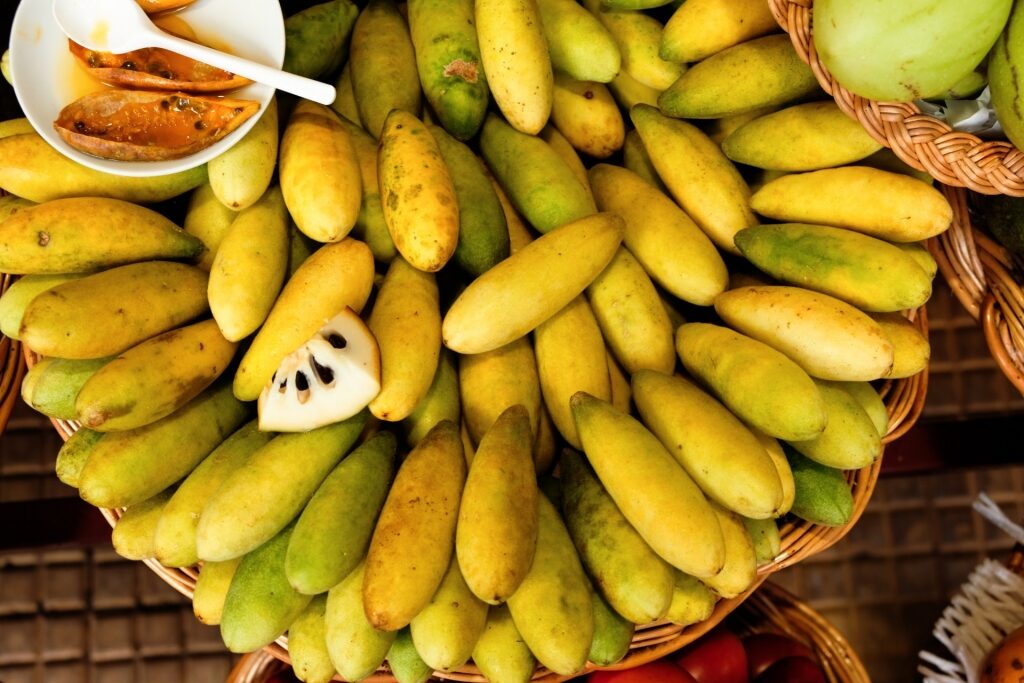
Banana passionfruit
Some of the most fascinating seasonal fruits you’ll find include the banana passionfruit, deceptively oval in appearance yet packed with passion fruit flavor, sweet custard apples, and the green-vegetable-like “delicious fruit”, which is only safe to be eaten when ripe and has a jackfruit-meets-pineapple taste.
Bananas coat the island’s south side and can be found in abundance, while chestnut products (especially the liquors) from the interior valleys make for special gifts to take home.
Enjoy Panoramas From Monte Palace
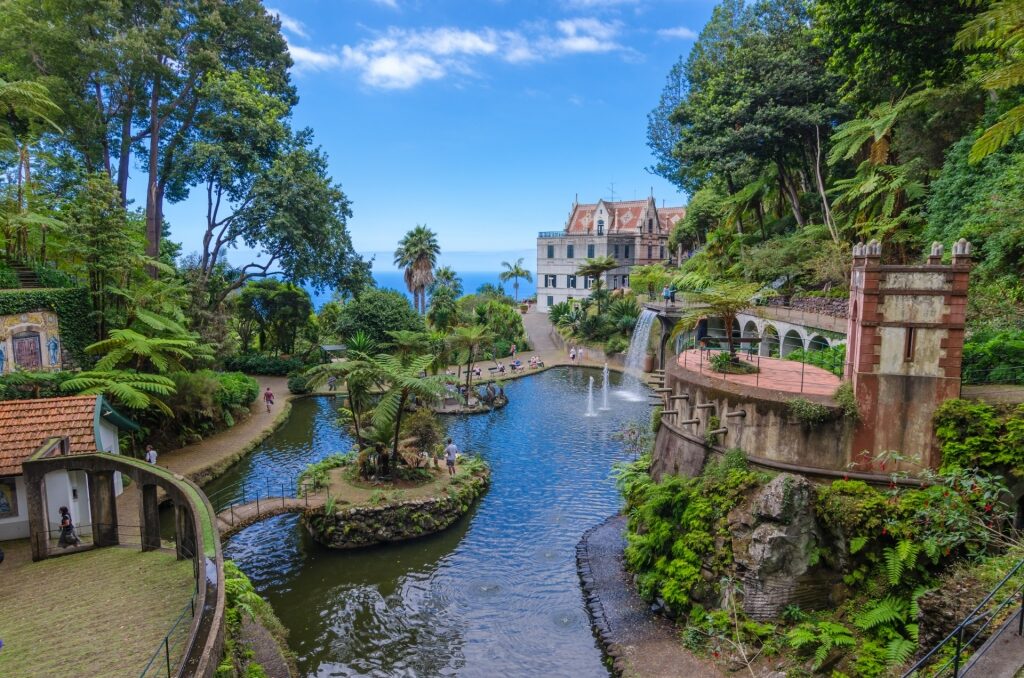
Monte Palace
One of the best things to do in Madeira is to ride the cable car up to Monte Palace and Gardens for a slice of Funchal’s opulent history and sweeping panoramic views. This lofty and leafy parish is sprinkled with century-old trees and tropical blooms, especially concentrated around the palace’s gardens.
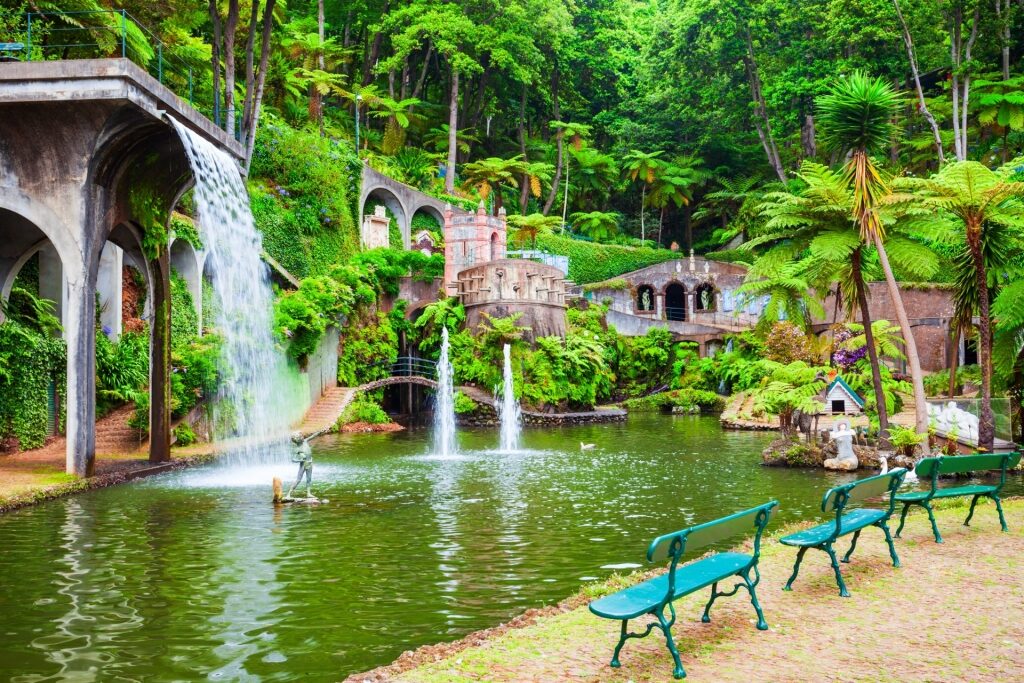
Monte Palace
The well-manicured park is a delight to walk through. You’ll find a Japanese-style pond complete with a striking red pagoda, and an extensive collection of hand-painted panels depicting the country’s royalty and history.
There are fragrant rose hedges, ornamental fountains, and a museum space housing rare minerals. While the palace has lost its royal purpose (it served as a hotel and is now an exhibition space), the grand gardens still provide a taste of bygone regal days.

Carreiros do Monte
When returning to Funchal, you can experience another of Madeira’s well-heeled traditions by riding a wicker basket sledge back down the hill, pushed by two white-clad runners.
These Carreiros have been transporting visitors and nobility down the steep hills for over 100 years, and speeding down the road with the wind in your hair is a unique experience.
Admire the Madeira Botanical Garden
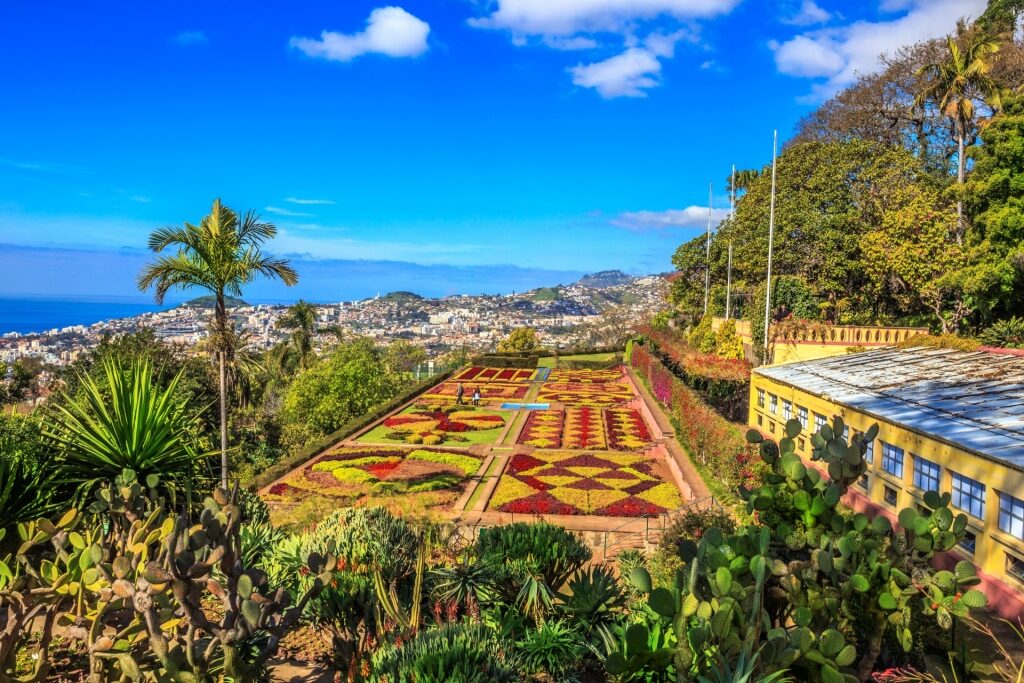
Madeira Botanical Garden
From Monte, a second cable car links to Madeira’s Botanical Gardens, where exotic plants have flourished thanks to the island’s subtropical temperatures.
Although the botanical garden didn’t officially open until 1960, the area was under private ownership before, and many of the ornamental shrubs and pristine flower beds were laid prior to the park’s public opening.
Some 2,000 species occupy the ornamental space, with wonderful views across the valley that make it one of the most beautiful places in Portugal. The vistas over the Baroque-style gardens are by far the highlight.
Take in the View at Cape Girão

Pico dos Barcelos
One of the best miradouros (viewpoints) in Funchal, Madeira, can be found at Pico dos Barcelos, an observation deck around an hour’s climb or a short drive from the center. On a clear day, you’ll spot the Desertas Islands, another part of the archipelago, in the distance.
Pause at the Barcelos A Noite cafe to enjoy a glass of wine, or the local Coral beer, on the terrace with the sweeping vistas of the city, countryside and coast just beyond.

Cape Girão
For an even more impressive panorama, head to Cape Girão, a 20-minute drive from the city. Europe’s highest sea cliff, towering some 1,900 feet above the ocean, is further enhanced with a glass platform extending out over the tiny village below.
Relax on the Beaches and in Natural Pools
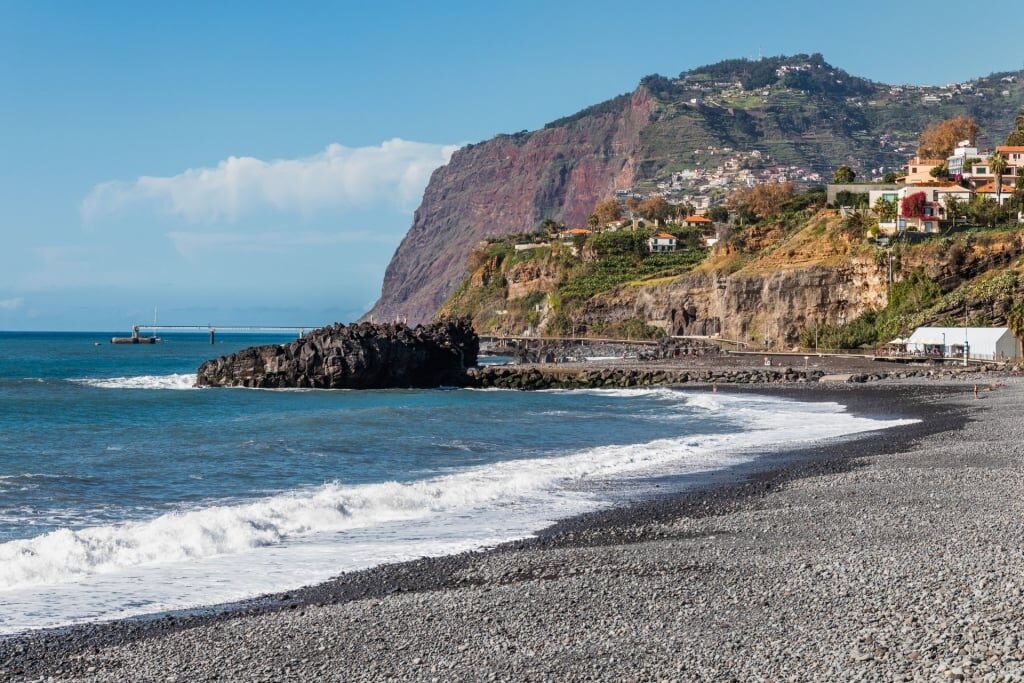
Praia Formosa
Given that Madeira is surrounded by the Atlantic Ocean, chances are the beach will be calling during your trip to Funchal. It’s good to know that not all the beaches that Portugal is famous for are created equally. Luckily, the south side of the island where the city sits generally has much calmer waters than the north.
If you prefer a more traditional, golden sand experience, head east by car from Funchal to Machico Beach, one of the best beaches in Madeira. To the west of Funchal, Praia Formosa is the largest beach near the city, with pebbles rather than sand. On the bay’s eastern rocks, a lido has been crafted for more serene swimming.
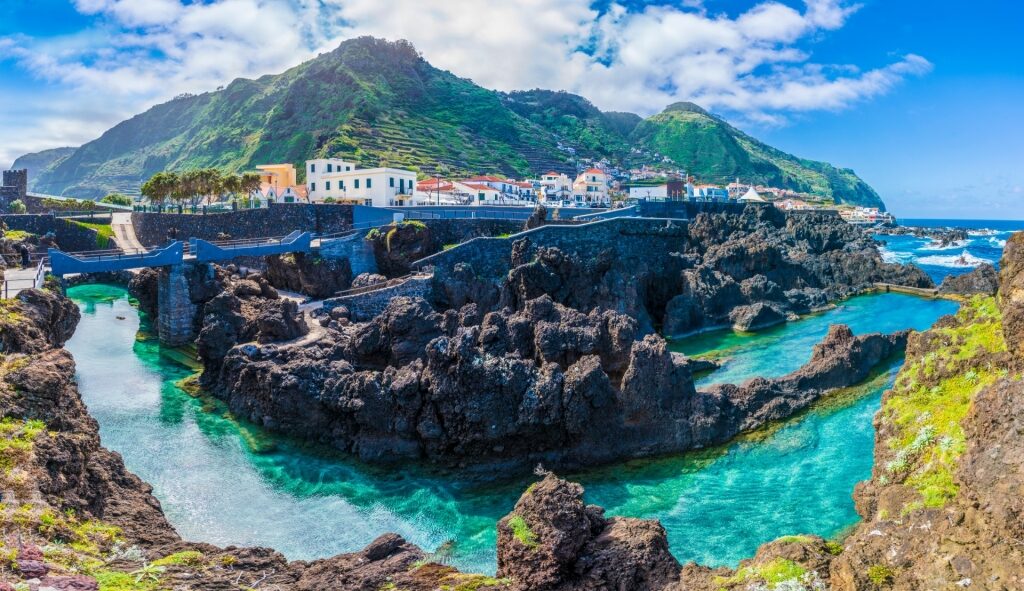
Porto Moniz
For the most spectacular natural pools that the island is well known for, you’ll need to drive around an hour from the city to Porto Moniz, one of the best beach towns in Portugal.
Food & Drink
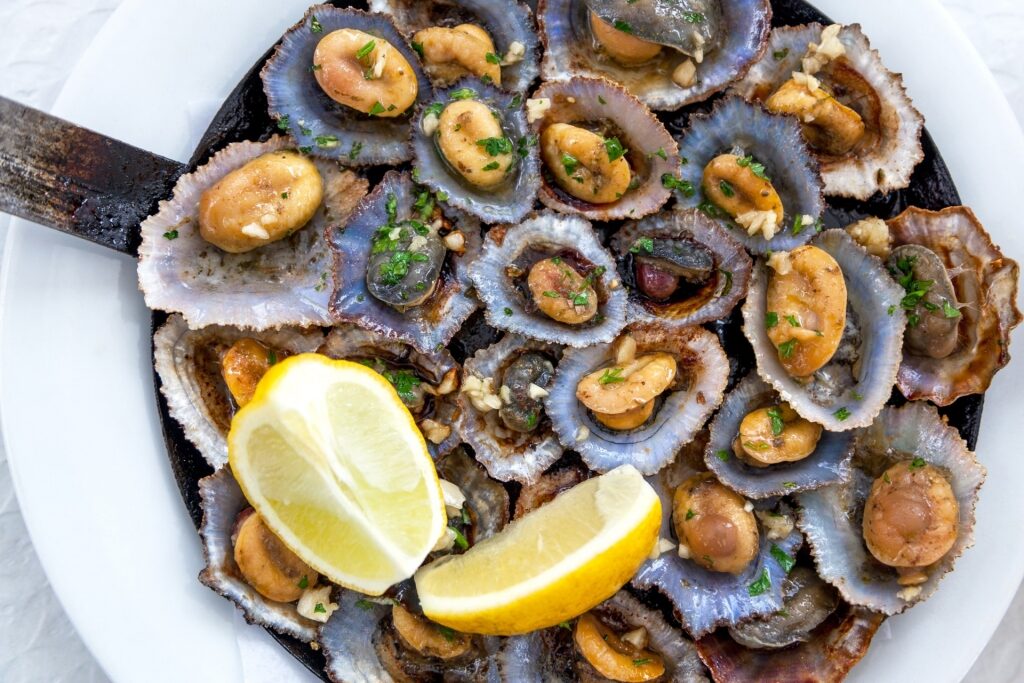
Lapas
The gastronomic scene in Funchal has flourished in recent years. Tiny tascas serving traditional dishes can be found on the Old Town’s narrow streets, while a couple of Michelin-star restaurants (Il Gallo d’Oro is an advance reservation worth making), and creative modern bistros deliver more upscale and creative options.
Dive into the islands’ seafood flavors by trying some local dishes. Lapas, a shellfish harvested from nearby rockpools, are simply cooked with garlic oil and are best accompanied by Bolo do Caco, the island’s flatbread.
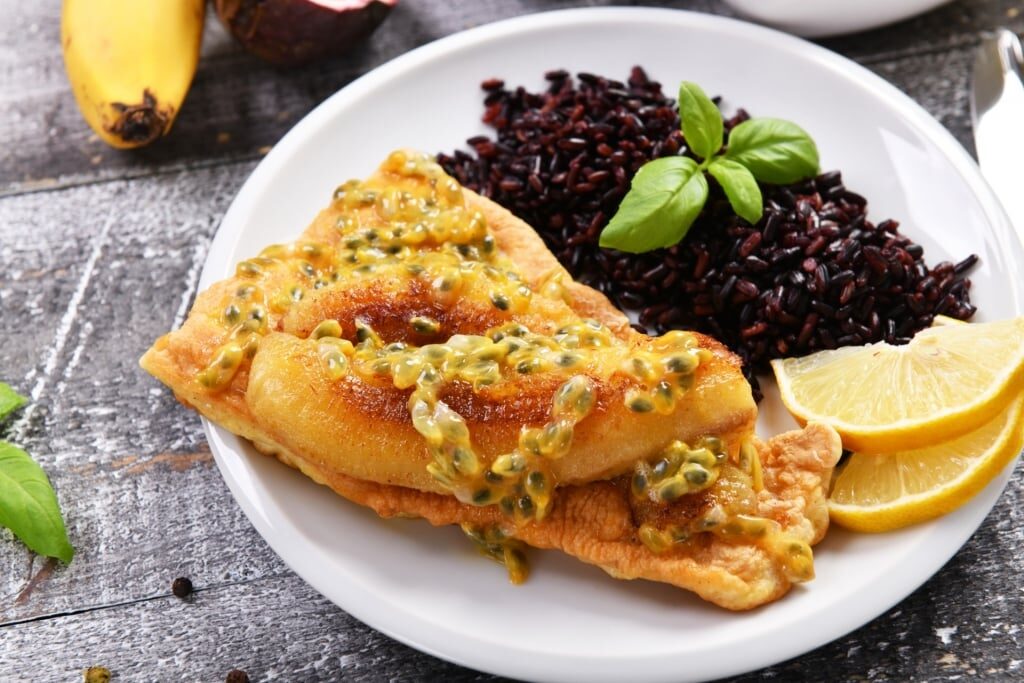
Black Scabbard fish
For a more intriguing yet delicious combination, opt for Black Scabbard fish with fried banana. This deep-water fish is similar in flavor to haddock and is topped by the island’s bountiful bananas.
Beef is also of high quality and often uses premium, grass-raised stock from the Azores, another Portuguese archipelago. The most typical serving is on a large, grilled skewer called Espetada Madeirense.
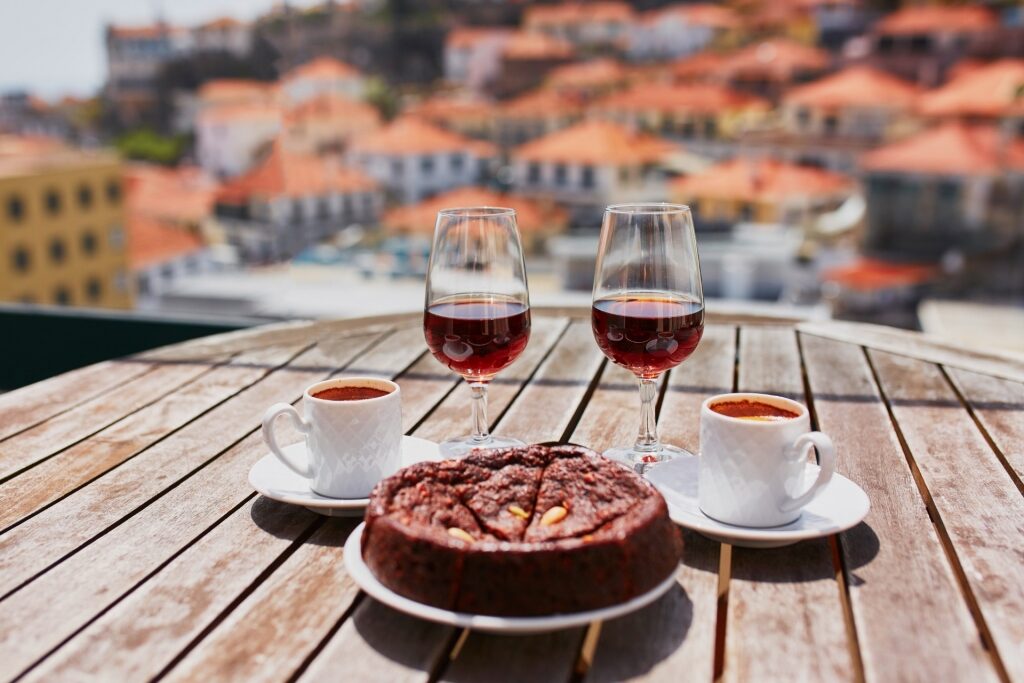
Madeira wine
Round off your meal with a glass of Madeira wine, a fortified tipple which can be both sweet or dry. The rather unique, slightly smoky, nutty wine makes for an excellent digestif. Blandy’s Wine Lodge in Funchal provides tours and tastings.
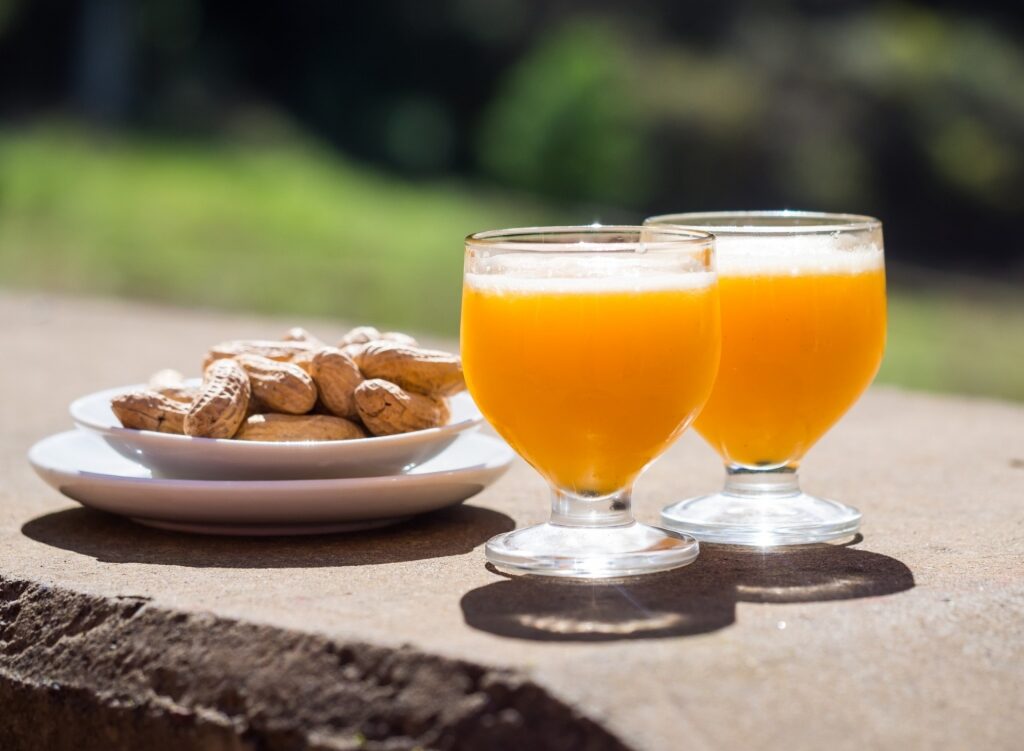
Poncha
If you’d prefer something a little stronger, try Poncha, a rum-based cocktail crafted from Madeira’s sugar cane. Served in various flavors, from lemon with a little sugar to the sweet and tangy passion fruit version, poncha is best sampled in the drink’s birthplace of Câmara de Lobos, a fishing village slightly further along the coast from Funchal.
Best Time to Visit Funchal
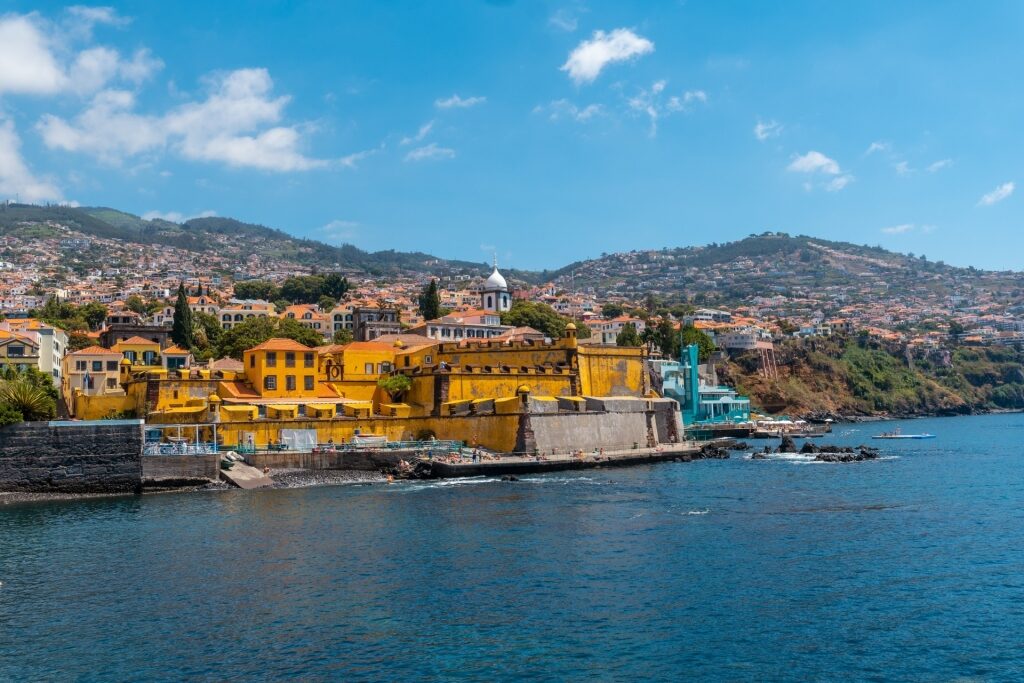
Forte de São Tiago
April to October is the best time to visit Funchal, Madeira, with more reliable weather and dolphin and whale sightings. Cultural events and festivities also occur in abundance during the summer, with April and May seeing the best blossoms alongside the famous flower festival.
While the weather is mild and warm year-round, for ocean dips and the highest temperatures, August is the best month to visit.
The peak of summer, however, can be crowded, so the shoulder season months of April and May, or September and October, provide a perfect balance of weather and activities without the crowds.
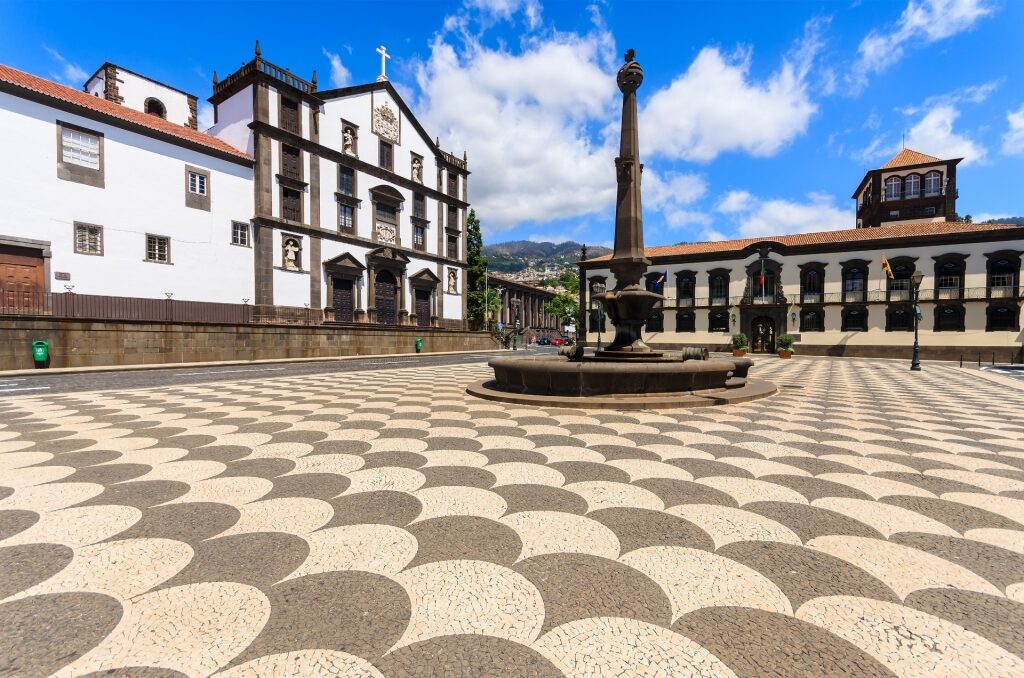
Old Town
Eager to explore the old streets of Funchal and the surrounding natural sights of this Atlantic island? Browse Celebrity’s cruises to Funchal, Madeira and start planning your next getaway.
